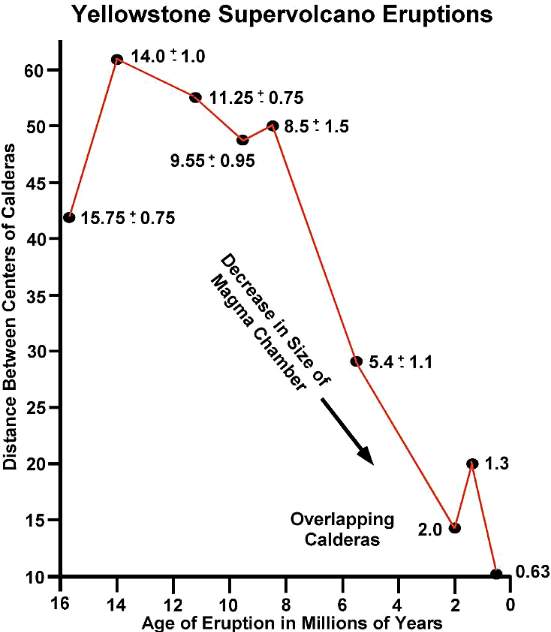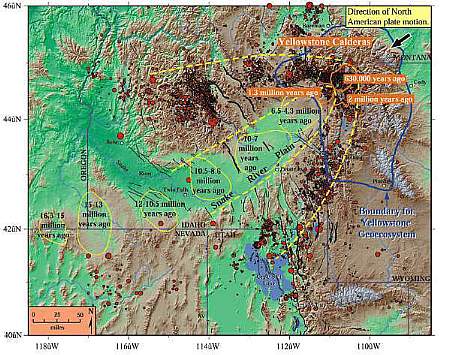For your Yellowstone Project
These data will help you evaluate the current Yellowstone trend in earthquakes, domal uplift, and rise in ground temperatures and geyser hydrothermal temperatures. The chart below was created from the USGS map linked to below from http://volcanoes.usgs.gov/yvo/images/2000-rbs-1.3ysrp_large.jpg. Click on image for enlargement.

Note: The estimated size of the calderas, as well as the distance between them (in miles), decreases sharply after the 5.4 million year eruption. Note also that the frequency of eruptions has increased with the decrease in caldera (magma chamber) size. What does this mean in regard to the size of the eruption? Is the last eruption at about 630,000 years ago more than, equal to, or less than the interval of time between prior eruptions? Do the math. Plot the trend. And finally, what might the overlap of calderas from the last three eruptions have to do with the size of the eruptions or the size of the calderas?
Key words and concepts: fractured caprock; unfractured caprock; hydrothermal system; leaky; pressure buildup; relative size.
